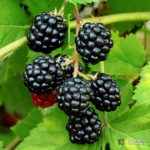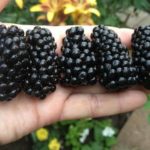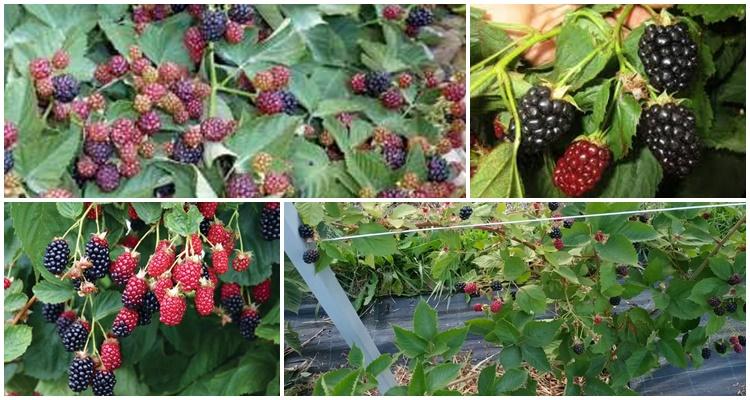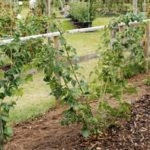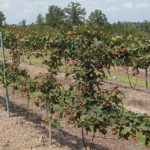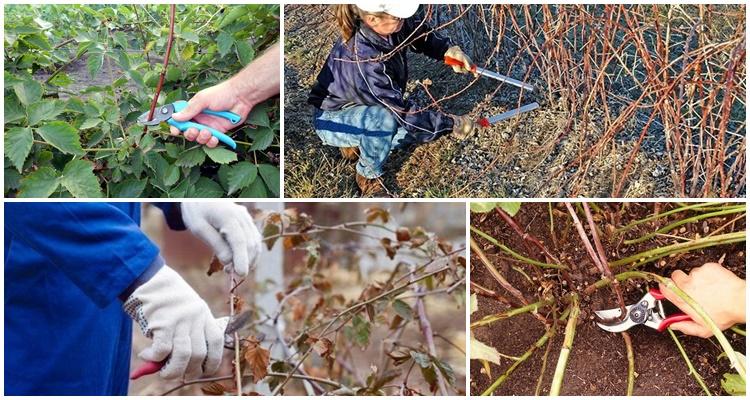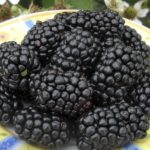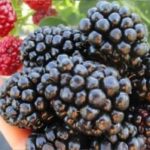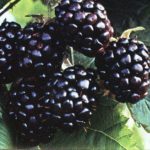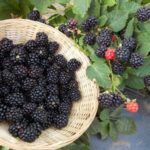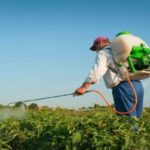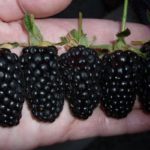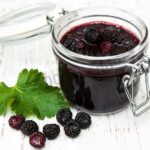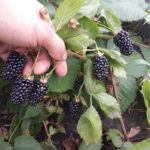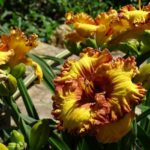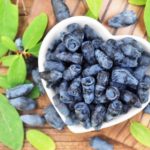Apache blackberries are considered a relatively new crop. Its fruits contain many vitamins and minerals. The key advantages of the plant include high yield parameters and large fruits. At the same time, the variety is considered very capricious to the influence of various climatic factors. In order for the plant to develop normally, it requires high-quality care.
- History of selection
- Botanical description and characteristics of the culture
- Pros and cons of the Apache variety
- Subtleties of growing blackberries
- Deadlines
- Selecting a location
- Selection and preparation of planting material
- Planting scheme
- Recommendations for plant care
- Watering
- Trimming
- Top dressing
- Preparing for winter
- Diseases and pests
- Reproduction
- Harvesting and storage
History of selection
The variety was obtained in 1988.To do this, scientists from the Arkansas Institute crossed an experimental hybrid or Navajo variety. As a result, we managed to obtain a hybrid Apache variety. It turned out to be more productive than the parent crops. In addition, the plant is characterized by larger fruits. They do not become smaller throughout the entire fruiting season. Blackberry shoots do not have thorns, and the fruits have a sweet taste.
Botanical description and characteristics of the culture
The Apache variety has large oval berries. Their weight is about 9 grams. In addition, the fruits are up to 1.5 centimeters long. They are characterized by a beautiful bluish-black hue and glossy structure.
The bushes are quite powerful. They are characterized by straight stems that reach a height of 3 meters. The variety belongs to the Kumanik family. To increase productivity and facilitate maintenance, formative pruning is required.
Pros and cons of the Apache variety
Since the variety is considered medium-late, there is a risk of insufficient fruit ripening. This problem occurs when early winter sets in.
Subtleties of growing blackberries
For blackberry growing to be successful, it requires quality care.Compliance with planting rules is of no small importance.
Deadlines
In the south, blackberries are best planted in the fall. It is recommended to do this 1 month before the arrival of cold weather. In areas with a more severe climate and frosts down to -15 degrees, planting work is carried out exclusively in the spring. This should be done in March.
Selecting a location
When choosing a planting site, it is recommended to take into account climatic features:
- if summer is hot and long, it is recommended to choose shady places with good ventilation;
- in areas with a temperate climate and cool summers, blackberries are suitable for sunny places, protected from the wind;
- It is better not to plant the plant in the north.
Selection and preparation of planting material
For planting, it is recommended to use annual seedlings that have 2-3 shoots and a thickness of 5-10 millimeters. They must have a developed root system, the length of which is at least 10 centimeters. Before planting, it is recommended to clear the bushes of damaged fragments.
Planting scheme
Bushes should be placed at least 1 meter from each other. The row spacing should be 2 meters. To plant blackberries, it is recommended to do the following:
- 2 weeks before planting, dig holes 50 centimeters in size.
- Place 5-6 kilograms of humus at the bottom or mix 5 kilograms of bird droppings with 100 grams of wood ash.
- Place the bush in the hole and cover the roots with soil.
- Make a hole around it and pour 5 liters of water under the bush.
- Sprinkle the soil with mulch and cut the branches to 4-5 centimeters.
Recommendations for plant care
To increase yield parameters, it is worth following the rules of agricultural technology. To do this, it is worth watering and pruning the bushes on time, feeding them, and insulating them for the winter.
Watering
In dry weather, blackberries need to be watered. This is recommended to be done during flowering, at the stage of fruit set and during harvesting. When using a drip irrigation system, you should ensure that there is no stagnation of moisture.
Trimming
Bushes need to be formed by pruning. This makes it easier to cover them for the winter. To do this, at a height of 40-45 centimeters, you need to pinch vertical shoots. After this, place the branches horizontally along the trellis. It is also necessary to remove old and damaged branches every year. This will help increase crop productivity.
Top dressing
It is recommended to apply fertilizer for the first time in the 2-3rd year of the plant’s life. With the arrival of spring, it is necessary to make a mulching layer of peat, compost or humus. This will saturate the bushes with nutrients and speed up the growth of greenery.
Preparing for winter
Apache blackberries have difficulty withstanding winter frosts. Therefore, it needs insulation. Properly pruned bushes can be easily covered with straw, cardboard or agrofibre.
Diseases and pests
The culture is considered resistant to rust and anthracnose. However, if the soil is excessively moistened, there is a risk of the bushes being damaged by gray rot. To avoid problems, you should follow the rules of prevention.
So, if the rules of care are violated, the plant may suffer from the following pathologies:
- Rust. At the same time, the foliage becomes covered with orange dots and brown pads. At the first symptoms of a disorder, fungicides are used - “Tilt” or “Tinazol”.
- Purple spotting. The fungus affects petioles, buds, and branches. When it appears, it is worth using fungicides. It is also acceptable to use Bordeaux mixture 2%.
- Anthracnose. The disease occurs at high humidity. For treatment and prevention it is worth using fungicides.
Reproduction
The crop can be propagated by shoot tips or root suckers. At the same time, it is important to protect young seedlings from drafts. It is important to ensure that the soil does not dry out. “Kornevin” or “Geteauxin” will help improve rooting.
Harvesting and storage
It is worth picking the fruits as they ripen. It is important to pick the berries carefully so as not to damage them. The harvest should be stored in dry containers, separating damaged berries from whole ones. It also requires clearing of leaves and debris. Fresh berries can be kept in the refrigerator for 4-7 days. If longer storage is required, the fruits can be dried, frozen, or made into blanks. Apache blackberries are considered a popular variety with high yields. At the same time, it is important to properly care for the plant and prevent diseases.

